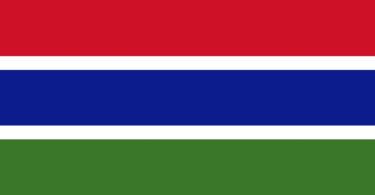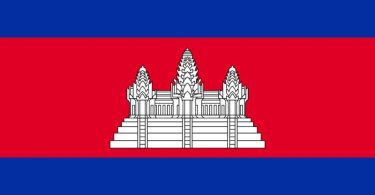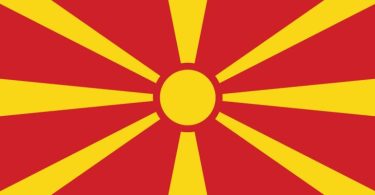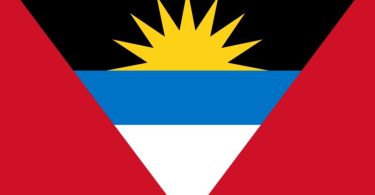PART I. PRINCIPLES AND OBJECTIVES
Article 1. Democratic Republic of São Tomé and Príncipe
The Democratic Republic of São Tomé and Príncipe is a sovereign and independent State, pledged to the building of a free, just and interdependent society, to the defense of human rights and in an active solidarity among all men and all peoples.
Article 2. National Identity
The Democratic Republic of São Tomé and Príncipe guarantees the Sao Tomean national identity and encompasses every and any Sao Tomean resident within or outside its territory.
Article 3. Sao Tomean Citizenship
- Sao Tomean citizens are all those born in national territory, the children of a Sao Tomean father or mother and those who may be considered such by the law.
- Sao Tomean citizens who acquire the nationality of another country retain their original nationality.
Article 4. National Territory
- The territory of the Democratic Republic of São Tomé and Príncipe is comprised of the Islands of São Tomé and Príncipe, of the Islets of Rolas, Cabras, Bombom, Bone Jockey, Pedras Tinhosas and other adjacent islets, by the territorial sea within a circle of twelve miles beginning at the baseline determined by the law, by archipelagic waters situated within the interior of the baseline and the airspace that extends over the combined territory as previously defined.
- The Sao Tomean State exercises its sovereignty over the entire national territory, the subsoil of the terrestrial space, the soil and the subsoil of the maritime territory formed by the territorial sea and the archipelagic waters, as well as the living and non-living natural resources which may be found in all the aforementioned spaces and those existing in the adjacent waters overlying the coasts, outside the territorial sea, to the extent the law determines and in conformity with International Law.
Article 5. Unitary State
- The Democratic Republic of São Tomé and Príncipe is a unitary State, without prejudice to the existence of local authorities.
- The Capital of the Republic is the city of São Tomé.
Article 6. State of Democratic Law
- The Democratic Republic of São Tomé and Príncipe is a State of democratic rule of law, based on the fundamental rights of the human being.
- Political power belongs to the people who exercise it through universal, direct, equal, and secret vote under the terms of the Constitution.
Article 7. Justice and legality
The State of democratic rule of law means the safeguarding of justice and legality as fundamental values of collective life.
Article 8. Lay State
The Democratic Republic of São Tomé and Príncipe is a lay State, within it existing a separation of the State with respect to all religious institutions.
Article 9. State of Mixed Economy
- The economic organization of São Tomé and Príncipe rests on the principle of a mixed economy, having in view national independence, development, and social justice.
- The coexistence of public property, cooperative ownership and private property of means of production is guaranteed within the terms of the law.
Article 10. Prime Objectives of the State
Prime objectives of the State are:
- Guarantee the national independence;
- Promote, respect and enforce personal, economic, social, cultural and political rights of citizens;
- To promote and ensure the progress of democratization and economic, social and cultural structures;
- Preserve the harmonious balance of nature and of the environment.
Article 11. National Defense
- Responsibility for ensuring National Defense rests with the State.
- The National Defense has as essential objectives the guaranteeing of the national independence, the territorial integrity, the respect for democratic institutions.
- A special law will regulate its form of organization.
Article 12. International Relations
- The Democratic Republic of São Tomé and Príncipe is determined to contribute toward the safeguarding of universal peace, toward the establishment of equal rights and mutual respect for sovereignty amongst all States and toward the social progress of humanity, on the basis of the principles of international law and peaceful coexistence.
- The Democratic Republic of São Tomé and Príncipe proclaims its adherence to the Universal Declaration of Human Rights and to its principles and objectives of the African Union and of the United Nations Organization.
- The Democratic Republic of São Tomé and Principe maintain special ties of friendship and cooperation with Portuguese-speaking countries and with the host countries of Sao Tomean emigrants.
- The Democratic Republic of São Tomé and Príncipe promotes and develops close ties of friendship and cooperation with neighboring countries and those in the region.
Article 13. Reception of International Law
- The norms and principles of general or common international law form an integral part of Sao Tomean law.
- The norms contained in international conventions, treaties and international agreements validly adopted and ratified by the respective competent bodies apply in the São Tomé legal order following their official publication, and as such are internationally binding on the São Tomé and Príncipe state.
- Norms provided in international conventions, treaties and international agreements, validly adopted and ratified by the respective competent bodies, take precedence, once they have come into effect in the international and national sphere, over all internal legislative and normative acts below the constitutional level.
Article 14. National Symbols
- The National Flag consists of three horizontal bars, being green and those of the extremes of equal width, and the middle, in which are affixed two five-pointed black stars, yellow, being one and one-half times larger than each of the others and by a scarlet triangle, whose base is located on the left side of the Flag. The height of the triangle is half that of the base.
- The National Anthem is “TOTAL INDEPENDENCE.”
- The insignia consists of the figure of a falcon to the left and a parrot to the right, separated by an ovular-form coat of arms, whose vertical abscissa is of a dimension 0.33 times larger than the horizontal and in whose interior a palm tree is featured along the vertical abscissa.





